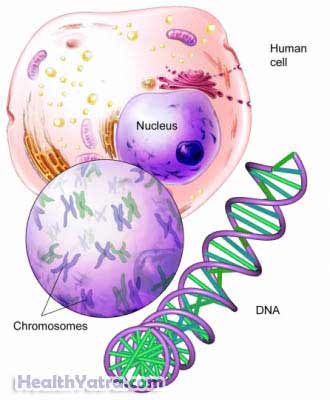Definition
von Willebrand disease (vWD) is a genetic blood disorder. It decreases the amount or the effectiveness of von Willebrand factor. This factor is a sticky protein. It helps to create a plug at the site of an injury to stop bleeding. Low levels or ineffective von Willebrand factor can cause bleeding problems.
There are three major types of vWD:
- Type 1—most mild and most common form
- Type 2
- Type 3—most serious form and very rare

Causes
vWD is caused by a genetic defect. The specific defect varies by the type of vWD, for example:
- Type 1—results in low levels of von Willebrand factor
- Type 2—results in von Willebrand factor that does not work well
- Type 3—results in no von Willebrand factor
This genetic defect if most often inherited from the parent. A child can develop type 1 or type 2 vWD if just one parent has the defect. For type 3, both parent must have the defective gene. Some people may have the gene for vWD without having symptoms. They can still pass this gene to their offspring.
vWD can also develop from other medical conditions. This is called acquired von Willebrand syndrome.
Risk Factors
Having family members with vWD increase your risk of getting this disease.
Symptoms
Many people with the vWD gene have very mild symptoms or none at all. It may only be noticed after an injury or medical procedure.
Symptoms usually begin in childhood and fluctuate throughout life. The severity will vary from person-to-person. Common symptoms include:
- Easy bruising
- Frequent or prolonged nosebleeds
- Prolonged bleeding from the gums and minor cuts
- Heavy or prolonged bleeding during menstrual periods
- Bloody urine
- Prolonged bleeding after injury, childbirth, surgery, or invasive dental procedures
Type 3 vWD can also result in severe bleeding events with no apparent cause. This type can also cause bleeding into the joints. This can cause pain and swelling in joints.
Diagnosis
Your doctor will ask about your symptoms and medical history. You will be specifically asked about any bleeding events. A physical exam will be done. Your doctor may suspect vWD based on your bleeding history.
Blood tests will help to confirm the diagnosis and determine which type of vWD you have. These tests will look at different factors related to blood clotting. They will also measure the amount of von Willebrand factor in your blood.
Treatment
Many people with vWD do not need treatment. If you do, your treatment will depend on the type and severity of your vWD. For most, treatment is only necessary if you are having a surgical or dental procedure.
Treatment may include:
- Desmopressin (nasal spray or injection)—raises the level of vWF in the blood. May be used to control bleeding in mild cases of type 1.
- Intravenous infusions of von Willebrand factors—to control your bleeding.
- Birth control pills—to control heavy menstrual periods in women with type 1 vWD.
- Antifibrinolytic medicine—for bleeding in the nose or mouth. Keeps a clot from being dissolved before the bleeding has stopped.
- Recombinant Factor VIIIa—if a antibodies to von Willebrand Factor are developed.
Special steps will also be taken during childbirth in women with vWD. Your doctor will monitor von Willebrand factor throughout pregnancy and treat as needed.
Prevention
There are no guidelines for preventing vWD. If you have a family history of vWD, genetic counseling may be helpful. Your counselor can determine the risk of vWD to your child.
